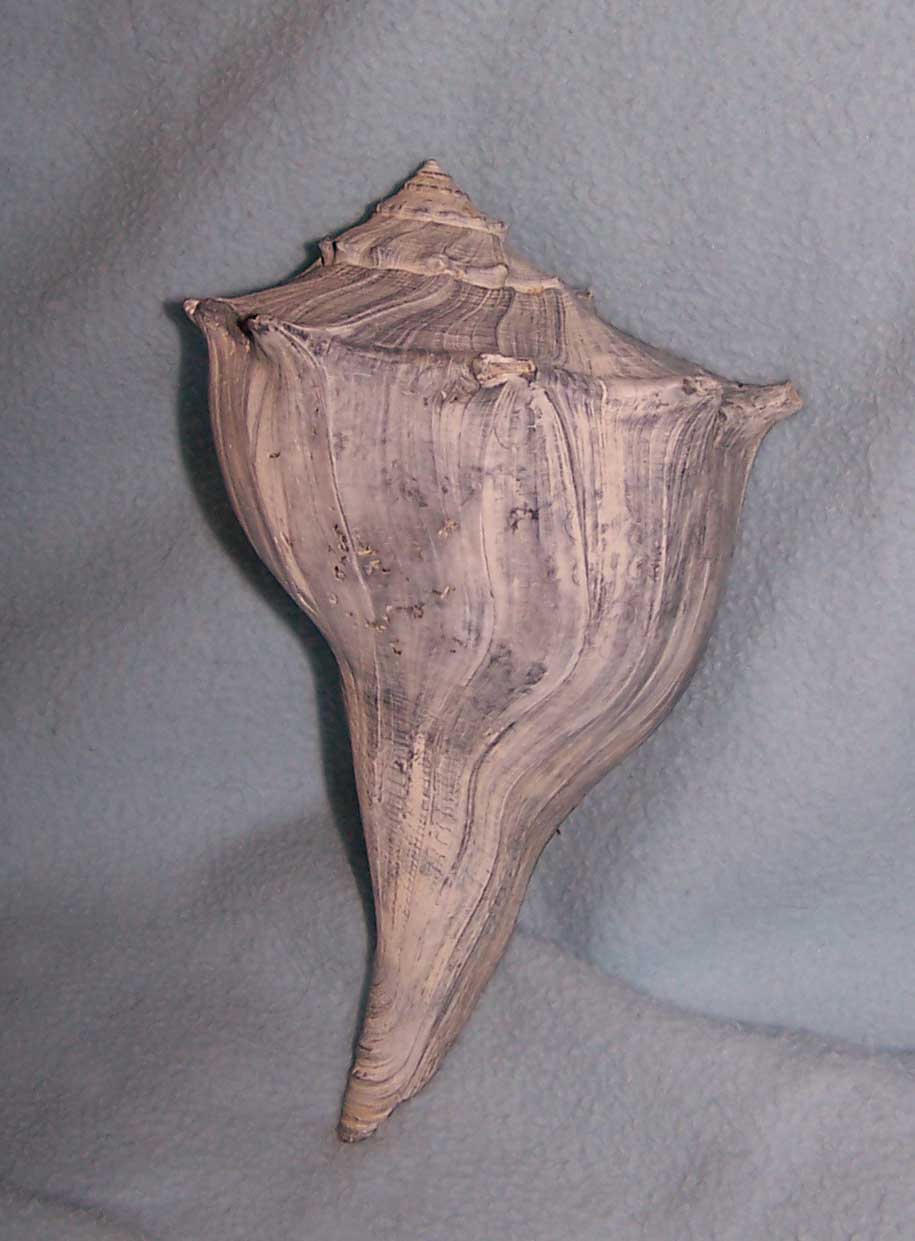- Lightning whelk
Taxobox
name = Lightning whelk

regnum =Animal ia
phylum =Mollusca
classis =Gastropoda
ordo =Sorbeoconcha
familia =Melongenidae
genus = "Busycon "
species = "B. perversum"
binomial = "Busycon perversum"
binomial_authority = (Linné, 1758.)
synonyms = "Busycon contrarium"
"Busycon sinistrum"The lightning whelk, "Busycon perversum", is an edible
species of very largepredatory seasnail orwhelk , a marinegastropod mollusk in the familyMelongenidae , the busycon whelks and crown conches. This species has a left-handed or sinistral shell.Distribution
This species is native to southeastern
North America : offNew Jersey south toFlorida and the Gulf states.Habitat
Lightning whelks can be found in the sandy or muddy substrate of shallow embayments.
Life habits
These whelks feed primarily on marine
bivalve s.Lightning whelks and knobbed whelks
The lightning whelk shares many characteristics with its sister species the knobbed whelk "Busycon carica", but there are some important differences:
*Lightning whelks are sinistral in coiling while knobbed whelks are
dextral
*Lightning whelks have a lower spire than the knobbed whelk
*The knobs of the lightning whelk are usually less well-developed than those of the knobbed whelk
*Lightning whelks arediurnal while knobbed whelks are active both day and night
*Lightning whelks prefer to stay in deeper waters than the knobbed whelks when feeding on mud flatsHuman use
*For thousands of years Native Americans used these animals as food, and used their shells for tools, ornaments, and containers.
*The lightning whelk is the State Shell of Texas
*Native Americans may have believed the sinistral nature of the lightning whelk shell made it a sacred object.Lightning whelks in popular culture
*In the 1994 video game
Final Fantasy VI , a gigantic lightning whelk is the first boss the player encounters. It is depicted as a large snail that absorbs thunder energy into its shell and releases it as an electrical attack.References
* Marquardt, W.M. 1992 Shell Artifacts from the Caloosahatchee Area. In "Culture and Environment in the Domain of the Calusa", edited by W. H. Marquardt, pp. 191-228. Institute of Archaeology and Paleoenvironmental Studies, Monograph 1. University of Florida, Gainesville.
* Paine, Robert T. 1962 Ecological Diversification in Sympatric Gastropods of the Genus Busycon. "Evolution" 16(4):515-523.
* Pulley, T.E. 1959 "Busycon perversum" (Linné) and some related species. "Rice Institute Pamphlet", 46:70-89.
* Wise, J.B., G. Harasewych, & R. Dillon. 2004. Population divergence in the sinistral "Busycon" whelks of North America, with special reference to the east Florida ecotone. "Marine Biology", 145:1163-1179; SMSFP Contrib.538.External links
* [http://crd.dnr.state.ga.us/content/displaycontent.asp?txtDocument=367 Georgia Department of Natural Resources, Snails of the Sea]
* [http://www.tpwd.state.tx.us/huntwild/wild/species/lwhelk/ Texas Parks and Wildlife, lightning whelks]
Wikimedia Foundation. 2010.
